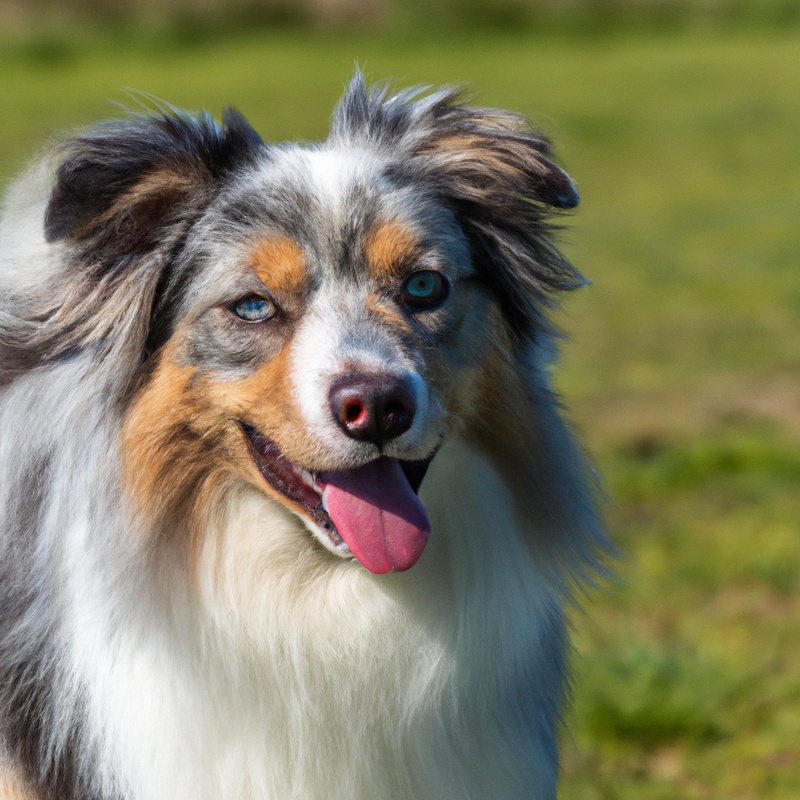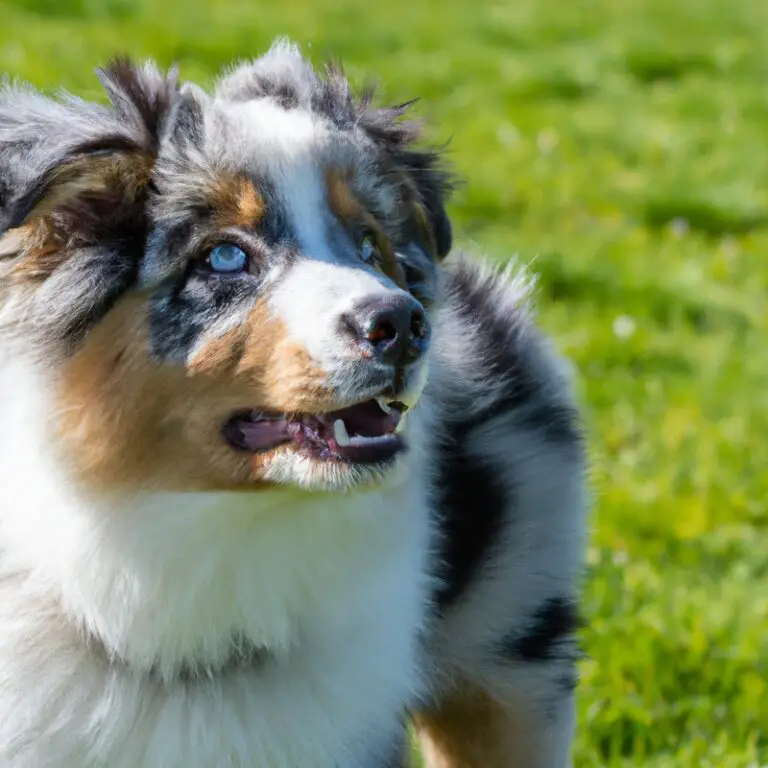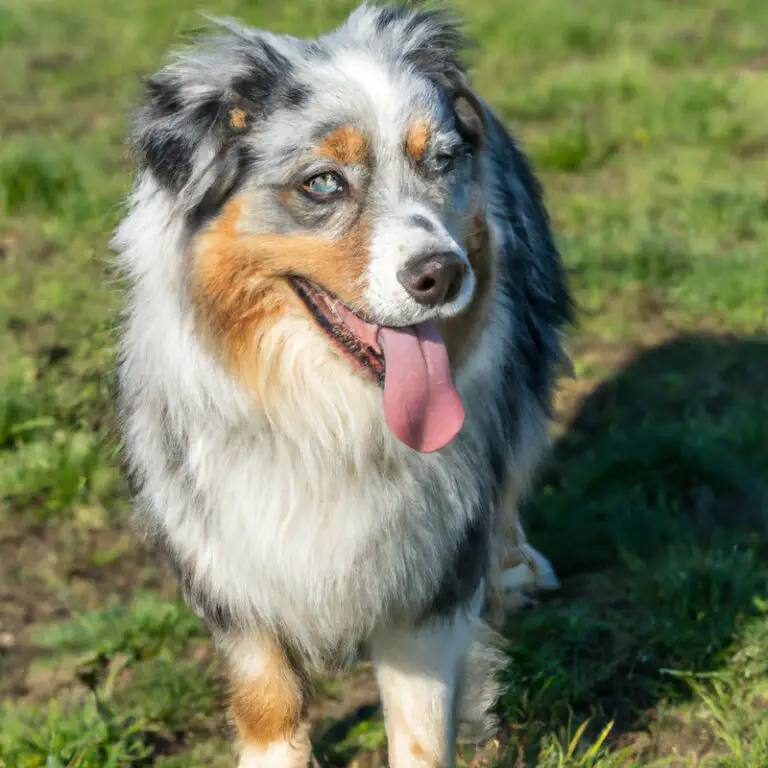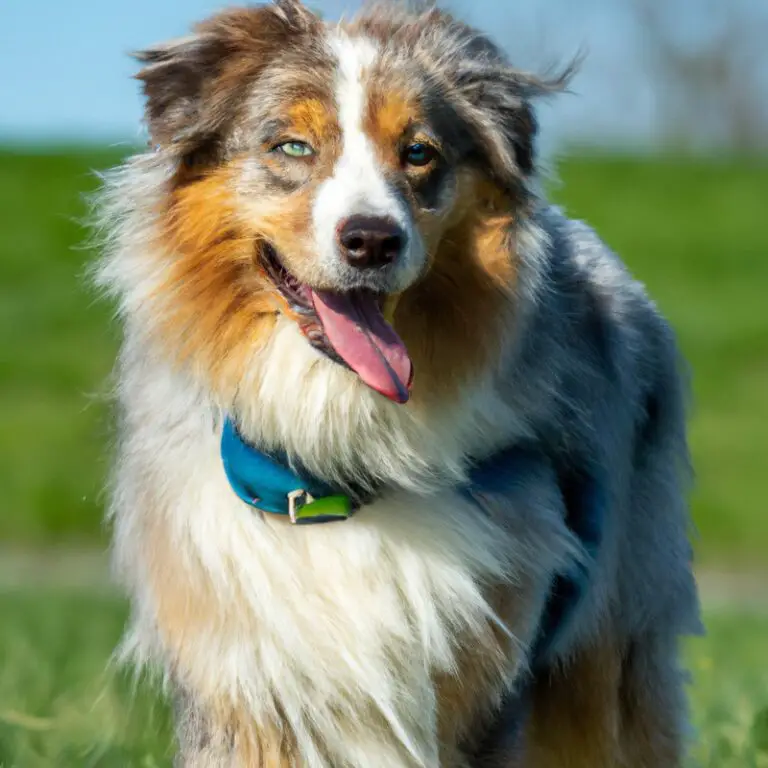How Do Australian Shepherds Handle Being Left Alone In a Kennel?
Key Takeaways:
- Australian Shepherds can handle being left alone in a kennel reasonably well.
- Early training and socialization can help Australian Shepherds adapt to being in a kennel.
- Providing engaging toys and mental stimulation can help alleviate anxiety for Australian Shepherds in a kennel.
- Regular exercise and attention from their owners can contribute to Australian Shepherds’ overall comfort in a kennel.
Are you considering leaving your Australian Shepherd alone in a kennel but worried about how they might handle it? As an expert in canine behavior, I’m here to shed some light on this topic.
Australian Shepherds, known for their loyalty and high energy levels, can sometimes struggle with being left alone.
In this article, we’ll explore their breed characteristics, the potential effects of kennel isolation, and most importantly, tips and alternatives to help your furry friend cope with being alone. So, let’s dive in and ensure your Australian Shepherd’s happiness and well-being, even when you can’t be by their side!
| Aspect | Handling |
|---|---|
| Separation Anxiety | May experience separation anxiety and become stressed when left alone for long periods. |
| Exercise | Require regular exercise to prevent destructive behaviors due to excess energy. |
| Training | Proper training and mental stimulation can help minimize behavioral issues when left alone. |
| Comfort | Providing a comfortable and secure kennel environment can help reduce anxiety. |
| Company | Australian Shepherds may benefit from the company of another dog or pet. |
Understanding the Australian Shepherd Breed
Overview of the Australian Shepherd breed
The Australian Shepherd is a medium-sized breed known for its intelligence and strong working instincts. Originally bred to herd livestock, Australian Shepherds are highly active and require plenty of mental and physical stimulation.
They have a distinctive coat that comes in a variety of colors and patterns, and their eyes can be strikingly bright blue.
Australian Shepherds are loyal, affectionate, and make excellent companions for active individuals or families. Training is important for this breed to prevent behavioral issues, as they are highly intelligent and can become bored easily.
Regular exercise and mental challenges are essential to ensure the well-being of Australian Shepherds.
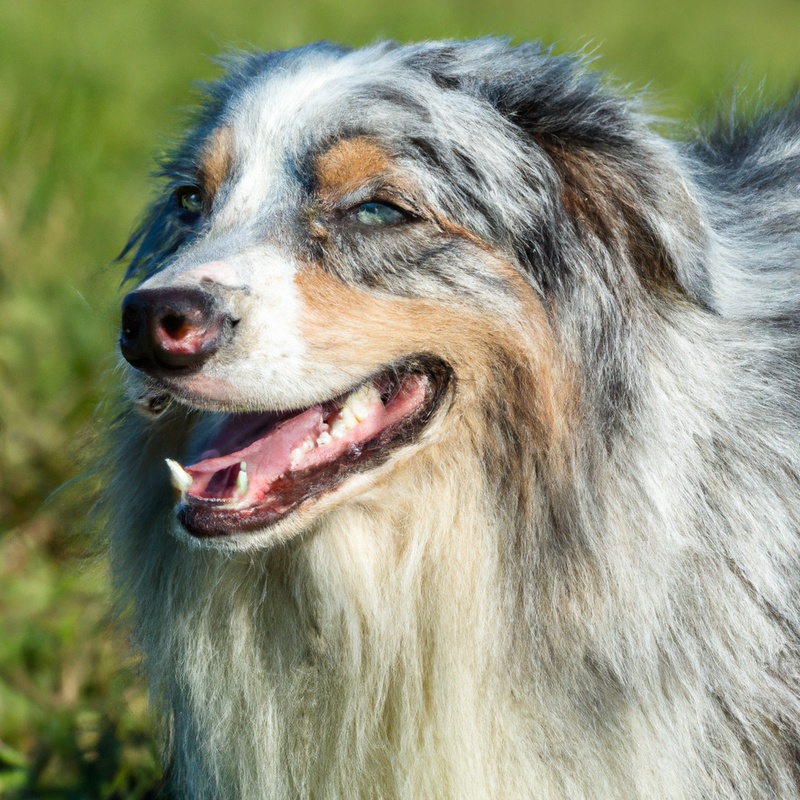
Key characteristics of Australian Shepherds
Australian Shepherds have several key characteristics that make them unique. They are known for their high level of intelligence and trainability, which allows them to excel in various activities and tasks.
These dogs are highly energetic and require plenty of exercise to keep them physically and mentally satisfied.
They have a strong herding instinct and may tend to nip at the heels of children or other animals. Australian Shepherds are also known for their loyalty and devotion to their families, making them excellent companions.
They have a thick double coat that requires regular grooming to keep it in good condition.
Additionally, these dogs are generally friendly and social with proper socialization, but may be reserved with strangers. Overall, Australian Shepherds are a versatile and intelligent breed that thrives in an active and engaging environment.
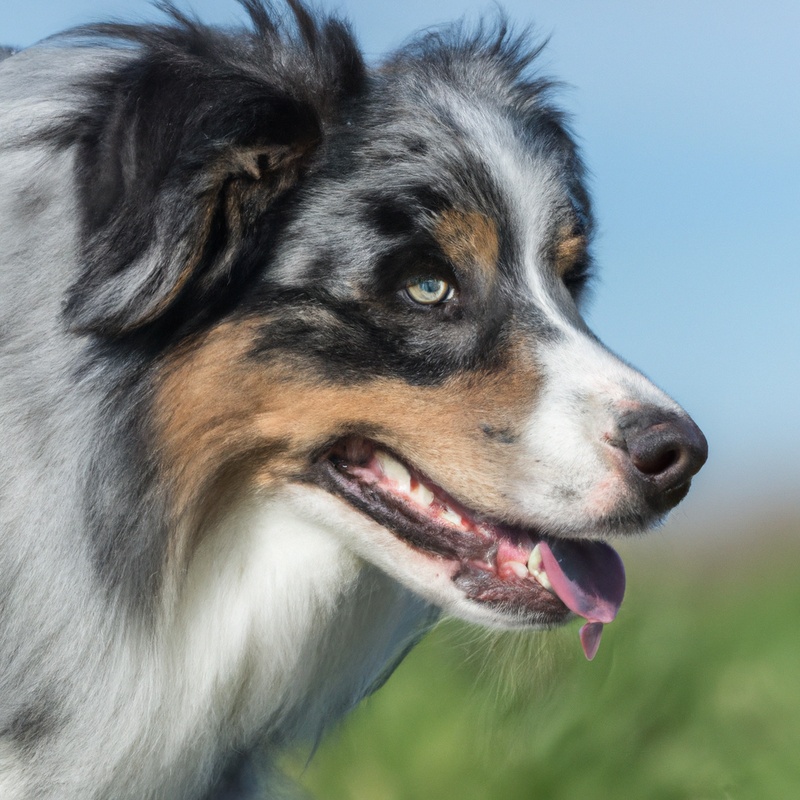
Energy levels and exercise requirements
Australian Shepherds are known for their high energy levels and exercise requirements. As an expert, I can tell you that these dogs are active and need plenty of physical activity to stay happy and healthy.
This breed was originally bred to work on ranches and herding livestock, so they have a natural instinct to be active and on the move.
To meet their exercise needs, Australian Shepherds should engage in daily activities such as brisk walks, runs, or hikes. They also excel at dog sports like agility, obedience training, and herding trials.
Mental stimulation is important too, so incorporating puzzle toys, obedience training, and interactive games can help keep their minds sharp.
Keep in mind that Australian Shepherds require more than just a quick walk around the block. Aim for at least 60 minutes of intense exercise each day.
This breed’s high energy levels can translate into destructive behaviors if they don’t get enough physical and mental stimulation.
So, it’s important to provide regular exercise for your Australian Shepherd to prevent boredom and to keep them physically and mentally satisfied.
Effects of Being Left Alone in a Kennel
Australian Shepherds’ sensitivity to separation
Australian Shepherds are known to be highly sensitive when it comes to being separated from their owners or family. They form strong bonds and thrive on human companionship.
Being left alone for long periods in a kennel can cause stress and anxiety for them.
It can lead to various behavioral issues such as excessive barking, destructive chewing, and even separation anxiety. Australian Shepherds may exhibit signs of distress when left alone, such as pacing, whining, drooling, or trying to escape.
They may also become withdrawn or depressed.
It’s important to understand that this sensitivity to separation is inherent to their breed and should be taken into consideration when making arrangements for them. To help Australian Shepherds cope with being alone in a kennel, it’s essential to gradually acclimate them to being alone.
Start with short periods of time and gradually increase the duration.
Providing mental and physical stimulation through interactive toys, puzzles, and regular exercise can also be beneficial. Creating a comfortable and secure kennel setup with familiar items like their bed, toys, and blankets can help reduce their anxiety.
Positive reinforcement techniques, such as rewarding them for calm behavior, can also make a positive impact.
If you find that your Australian Shepherd is experiencing severe distress or exhibiting problematic behaviors, it may be necessary to seek professional help. A professional dog trainer or behaviorist can provide guidance and support tailored to your dog’s specific needs.
In extreme cases, medication options may be considered under the guidance of a veterinarian.
Remember, understanding and addressing the sensitivity to separation in Australian Shepherds is crucial for their well-being and overall happiness. By providing them with the necessary support and attention, you can help them feel more secure and comfortable when being left alone.
Potential behavioral issues when left alone in a kennel
When Australian Shepherds are left alone in a kennel, they may experience some behavioral issues. Some potential issues include separation anxiety, excessive barking, destructive chewing, and attempts to escape the kennel.
These behaviors are signs of distress and discomfort.
It’s important to address these issues and make changes to ensure your Australian Shepherd’s well-being. Keep reading to learn more about how to help your Australian Shepherd cope with being alone in a kennel.
Understanding the mental distress caused by isolation
Isolation can cause significant mental distress for Australian Shepherds. Dogs are social animals that thrive on companionship and being part of a pack.
When they are left alone for extended periods, it can lead to feelings of anxiety, fear, and loneliness.
This can manifest in various ways, such as excessive barking, destructive behavior, and even self-harm. Being isolated can have a detrimental effect on an Australian Shepherd’s mental well-being, so it’s important to address this issue and find suitable solutions to prevent distress.
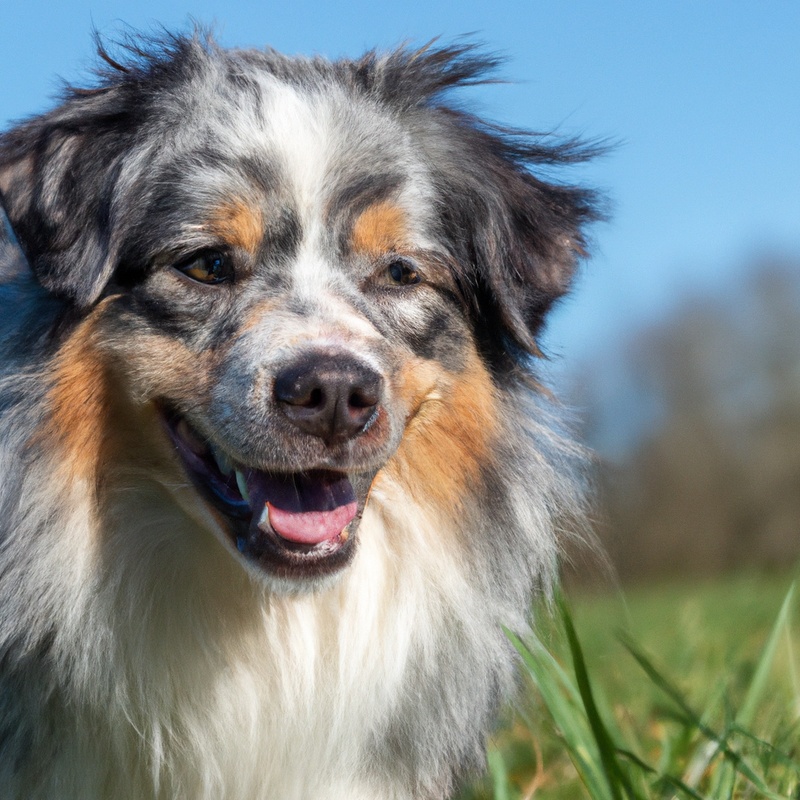
Tips to Help Australian Shepherds Cope with Being Alone in a Kennel
Gradual acclimatization to being alone
When it comes to helping Australian Shepherds cope with being alone in a kennel, gradual acclimatization is key. Take the time to gradually expose your dog to being alone by starting with short periods of time and gradually increasing the duration.
This allows your dog to build confidence and learn that being alone is not a cause for distress.
It’s important to remember that each dog is different and may require different timelines for acclimatization. By taking it slow and being patient, you can help your Australian Shepherd adjust to being alone in a kennel.
Providing mental and physical stimulation
To keep Australian Shepherds mentally and physically stimulated while in a kennel, there are a few simple activities you can try. First, provide them with puzzle toys that require mental engagement and problem-solving skills.
This will help keep their minds active and prevent boredom.
Additionally, consider giving them interactive toys such as treat-dispensing balls or Kong toys filled with peanut butter. These toys provide physical stimulation as well as mental stimulation, as they require the dog to play and work for their reward.
Finally, make sure your Australian Shepherd also has access to regular exercise outside of the kennel.
This could include walks, runs, or playtime in a secure and fenced area. By providing mental and physical stimulation, you can help your Australian Shepherd cope better with being alone in a kennel.
Recommended kennel setup and accessories
When it comes to setting up a kennel for your Australian Shepherd, there are a few accessories and setup recommendations that can help make their time alone more comfortable. Here are some tips:
- Size and space: Make sure the kennel is spacious enough for your Australian Shepherd to stand, turn around, and stretch comfortably. They need room to move and stretch their legs.
- Comfortable bedding: Provide a soft and comfortable bed or mat for your Australian Shepherd to lie on. This will help them relax and feel more at ease during their time alone.
- Safe and secure: Ensure that the kennel is secure and escape-proof. Double-check the locks and doors to prevent any accidents or escapes.
- Chew toys and puzzles: Australian Shepherds are intelligent and active dogs, so providing them with chew toys and interactive puzzles can help keep their minds stimulated while they’re in the kennel. This will also help prevent boredom and destructive behavior.
- Noise reduction: If your Australian Shepherd is sensitive to noise, consider using soundproofing materials or placing the kennel in a quiet area of your home. This can help reduce their stress levels and make them feel more secure.
Remember, every dog is unique, so it’s essential to observe your Australian Shepherd’s behavior and adjust the kennel setup and accessories accordingly. With proper accommodations and engaging toys, you can help your Australian Shepherd feel more comfortable and content during their time in the kennel.
Using positive reinforcement techniques
Positive reinforcement techniques are a great way to help Australian Shepherds cope with being alone in a kennel. These techniques involve rewarding your dog for desirable behavior, such as being calm and relaxed in the kennel.
One effective method is to give your Australian Shepherd a special treat or toy that they only receive when they are in the kennel.
This creates a positive association with the kennel and helps them feel more comfortable and secure. Another technique is to praise and reward your dog whenever they exhibit good behavior in the kennel, such as sitting or lying down quietly.
This reinforces their positive behavior and encourages them to continue behaving well in the kennel.
Consistency is key when using positive reinforcement techniques. Make sure to reward your Australian Shepherd immediately after they exhibit the desired behavior so they can make the connection between the behavior and the reward.
It’s important to remember that each dog is unique, so it may take some time and patience to find the right positive reinforcement techniques that work for your Australian Shepherd.
By using these methods, you can help your dog feel more comfortable and secure when left alone in a kennel.
Alternatives to Kenneling
Doggy daycare and pet-sitters
Doggy daycare and pet-sitters can be excellent alternatives to kenneling for Australian Shepherds. Doggy daycare facilities provide a safe and supervised environment for your dog to socialize and play with other dogs.
It gives them the opportunity to burn off energy and receive mental stimulation throughout the day.
On the other hand, pet-sitters offer personalized care in your own home, ensuring your Australian Shepherd receives attention, exercise, and companionship. They can follow your dog’s routine and provide one-on-one interaction, reducing any potential anxiety or stress caused by being left alone.
Both doggy daycare and pet-sitters allow Australian Shepherds to remain in a familiar environment, reducing the chances of separation anxiety.
It’s important to select reputable daycare facilities or reliable pet-sitters who have experience with the breed and understand their needs. These alternatives provide a beneficial solution for Australian Shepherds who may struggle with being alone in a kennel for extended periods.
They offer companionship, mental stimulation, and physical exercise, ensuring your pup remains happy and well-cared for while you’re away.
Crate training as an alternative
Crate training can be a great alternative to kenneling for Australian Shepherds. It provides them with a safe and comfortable space while you’re away.
The key is to introduce the crate gradually, making it a positive and enjoyable place for your dog.
Start by leaving the crate door open and enticing them inside with treats and toys. Once they’re comfortable, you can start closing the door for short periods of time.
Remember to never use the crate as a form of punishment and always reward your dog for good behavior in the crate.
With patience and consistency, crate training can help your Australian Shepherd feel secure and content when left alone.
Utilizing interactive dog toys
Utilizing interactive dog toys is a great way to keep your Australian Shepherd entertained and mentally stimulated when left alone in a kennel. These toys can help alleviate boredom and prevent destructive behaviors that can arise from being confined in a small space.
Interactive dog toys are designed to engage your pup’s mind and encourage them to problem-solve.
They often come with hidden treats or puzzles that your Australian Shepherd can work on to access the rewards. This helps keep their mind active and focused, providing mental stimulation while they are alone.
There are different types of interactive toys you can consider for your Australian Shepherd.
Treat-dispensing toys, such as puzzle balls or Kong toys, challenge your pup to figure out how to get the treats out. This can keep them occupied for hours and provide a fun and rewarding experience.
You can also opt for puzzle toys that require your pup to move pieces or solve puzzles to access treats or squeakers.
These toys offer mental challenges and entertainment to keep your Australian Shepherd engaged. Remember to choose toys that are durable and safe for your dog to play with unsupervised.
Always supervise them during the initial play with a new toy to ensure they don’t accidentally swallow or damage the toy.
By utilizing interactive dog toys, you can help keep your Australian Shepherd entertained, mentally stimulated, and less prone to behavioral issues when left alone in a kennel. These toys can make their time in the kennel more enjoyable and help prevent them from feeling lonely or anxious.
So, consider incorporating interactive toys into their kennel routine for a happier and healthier pup.
Exploring canine socialization options
Canine socialization is important for Australian Shepherds as it helps them develop good behavior and build positive relationships with other dogs and people. When exploring socialization options, consider taking your Australian Shepherd to dog parks, where they can interact with other dogs in a controlled environment.
Additionally, joining a dog training class or enrolling in obedience training can provide structured socialization opportunities.
Playdates with other dogs or supervised interactions with friends’ dogs can also be beneficial. Remember, socialization should be positive and gradual to ensure your Australian Shepherd’s comfort and safety.
Seeking Professional Help
Identifying signs of severe distress
Identifying signs of severe distress in Australian Shepherds when they are left alone in a kennel can help you address their needs appropriately. Some signs of severe distress include excessive barking or howling, destructive behavior such as chewing or digging, pacing or restlessness, attempts to escape the kennel, loss of appetite, and excessive drooling.
These behaviors indicate that your Australian Shepherd is experiencing significant emotional and mental distress.
It is important to recognize these signs and seek appropriate help to ensure the well-being of your furry friend.
Consulting a professional dog trainer or behaviorist
If you’re struggling with how your Australian Shepherd is handling being left alone in a kennel, it’s a good idea to consult a professional dog trainer or behaviorist. These experts have extensive knowledge and experience working with different breeds and can provide you with personalized guidance and advice.
A professional dog trainer or behaviorist can help assess the specific issues your Australian Shepherd is facing and develop a tailored training plan to address them.
They can teach you effective techniques to manage separation anxiety, build your dog’s confidence, and help them feel more secure when left alone. When consulting a professional, be prepared to provide detailed information about your dog’s behavior, routine, and any triggers that may be contributing to their distress.
This will help the trainer or behaviorist gain a better understanding of the situation and develop an appropriate plan of action.
Remember, every dog is unique, and what works for one may not work for another. A professional trainer or behaviorist can provide you with the knowledge and skills needed to support your Australian Shepherd and ensure their well-being when left alone in a kennel.
Don’t hesitate to reach out for help – you and your furry friend deserve it!
Exploring medication options for extreme cases
When it comes to extreme cases of Australian Shepherds experiencing severe distress when left alone in a kennel, exploring medication options can be a viable solution. Consulting with a veterinarian or an animal behaviorist is crucial in determining the appropriate medication for your dog’s needs.
Medications such as anti-anxiety drugs or sedatives may be recommended to help alleviate your Australian Shepherd’s anxiety and promote a calmer state of mind.
It’s important to follow the prescribed dosage and monitor your dog’s response to the medication. Remember to consult a professional before considering medication options for your Australian Shepherd.
Final Verdict
Australian Shepherds can struggle when left alone in a kennel due to their sensitive nature and high energy levels. This can lead to potential behavioral issues and mental distress.
However, there are several tips and alternatives that can help them cope better with isolation.
Gradual acclimatization, mental and physical stimulation, the right kennel setup, and positive reinforcement techniques can all make a difference. Additionally, exploring alternatives like doggy daycare, crate training, interactive toys, and canine socialization can provide them with much-needed companionship.
In severe cases, seeking professional help from a dog trainer or behaviorist, and considering medication options, can be beneficial.
Remember, understanding and addressing your Australian Shepherd’s needs when left alone in a kennel is crucial for their overall well-being and happiness.

